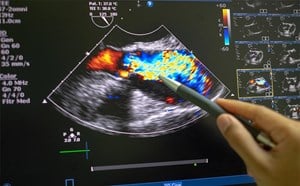
Finding the Right Practice Environment
By Jessica Best, MD, MS
After residency, I jumped into an academic fellowship that had me working at a large county hospital as well as a community setting without residents. I was able to experience the vast differences in practice environments immediately. Additionally, I picked up a few moonlighting jobs in the area with large practice groups and was able to get a sense of how each practice group functioned.
There were variations in staffing, pay, benefits, patient volume, scribes, even work morale.
It would have been hard to choose one of the several places I worked based on an interview and limited shadowing. I have noticed several emergency physicians will change jobs a few times before settling with one company. There are also those who always jump from place to place as locums or just PRN. There are so many options.
I very much enjoyed working at different practice environments. So much so that when I returned to Austin from Houston, I wanted to continue to work for at least two companies. I chose a practice group in a community hospital where I am single coverage, busy and treat a variety of patients. For my other job, I work in a Free Standing Emergency Department, where it is a bit slower paced. It can make it a bit tricky on scheduling. But in the end, I am happier and hopefully the setting will prevent burnout.
Transitioning Issues as an International Medical Graduate (IMG)
If you have made it this far as an IMG, you have already overcome your first hurdle, which is matching into residency. I have several friends who have graduated from different foreign medical schools, so I will share with you some of their issues.
In Texas:
If you have any medical school CORE rotations that were not affiliated with a residency, you will have an issue getting your medical license. For example, if you did a family medicine rotation, but it was under the umbrella of an internal medicine program (ACGME code), this rotation will not count. I have had two friends who had this issue one with family medicine and one with psychiatry. Also, make sure you have a family medicine rotation. How did they fix this? The one who was family medicine picked up a job in Missouri until he was board certified in Internal Medicine (which happens only a few months after residency not over a year as in Emergency Medicine). My other friend had to repeat a family medicine medical student rotation after his Emergency Medicine residency.
In California:
You do need to have L-6 forms for each medical school rotation to be signed by the clinical coordinator. These can be difficult to track down if you did rotations at multiple places. The California licensure time is also very long, so prepare early.
For myself, I did not have any issues when applying for my Texas Medical License. It did take a bit longer than my non-IMG co-residents. How efficient your medical school is at sending in documents will also be a factor.
Variability in starting an Academic vs. Community Job
I transitioned from residency into a fellowship. During my fellowship, I also was moonlighting with several large Emergency Medicine Groups. Here is what I found:
Credentialing:
My academic credentialing took 3-4 times longer than my community sites. If you are getting worried about having your academic job start on time, maybe consider picking up a moonlighting job to ensure you will have money when you finish residency.
EMR training:
Every job I have had made you come in for EMR training. Some could be extensive, others just a brief meeting. Make sure you are comfortable with the EMR before your first shift as this can slow you down and be very frustrating if you do not know how to do something simple. I have worked at various places that have residents (academic) or scribes(community) and despite them doing most of your documentation you want to be able to review and edit notes as you never know what someone else may write.
Shadowing before you first shift:
This was variable, so of the sites I have worked for had me come in to shadow and I could stay if I felt I needed. Most were non-paid. I could see patients and practice using the EMR and calling consults/admits. Some community groups may pay you as well for your shadow shifts.
Consults and Admitting Physicians:
Working at an academic center is by far the easiest when it comes to having to call consultations and hospitalists. First, the resident will take care of the calls and you never have to worry about calling the right group. In the community I have worked at places that have at least three admitting groups, several consult groups for one specialty. I have and still do call the wrong admitting group, this will happen and its okay. It will be most frustrating to you as you will be busy and don’t have time to waste on the phone. Keep cheat sheets and make sure to always ask patients who their PCP is and the names of all of their specialists right when you greet them, so you don’t have to run and find it later.



